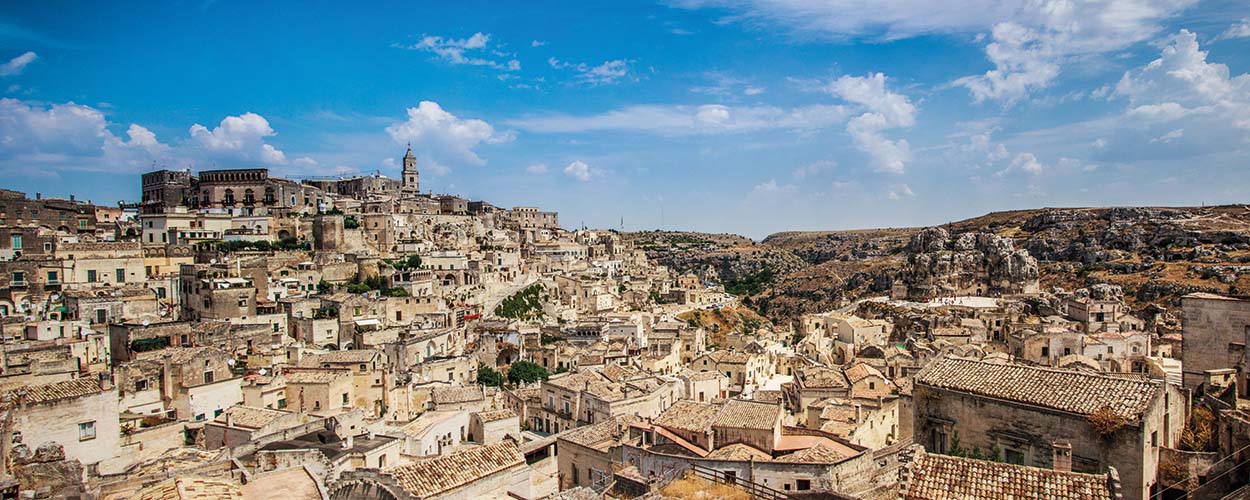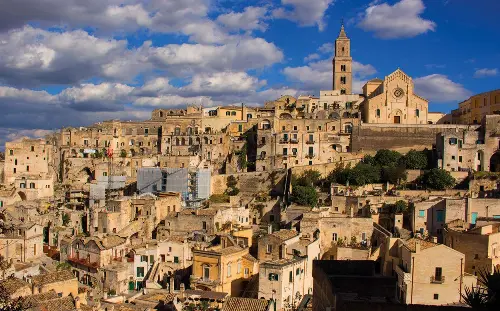
Matera, between tradition and technology according to the works director
Interviewing the works director Biagio Ferrara.
Interview with the works director of Matera Biagio Ferrara
Matera is a “fragile” city in a geographically difficult position and has a communications network that leaves it quite isolated. Yet it managed to become one of the 2019 Capitals of Culture.How did you manage to overcome the task of repaving the existing roads?
I was asked to come to Matera to offer my modest contribution towards the “Matera: 2019 Capital of Culture” project and, I must confess, I immediately fell in love with the city. I wouldn’t say Matera is “fragile”; I think perhaps it is just tired, like all of Basilicata. There is something you should be aware of regarding the repaving work: Matera will never forsake its historical traditions. But the city will certainly know how to combine new skills and new products in a kind of marriage between technology and tradition, without betraying its thousand year old past.
Repaving the road surfaces, the introduction of a pathway for the visually impaired and redevelopment of the network of underground systems: these are just some of the interventions carried out to redevelop the three main thoroughfares in the old city centre. How did you overcome the problems of traffic and safety during the works?
The site was so complex that, to minimise the amount of disruption to the local inhabitants and shops, we were forced to also work during the night. We went ahead in small steps and, as work on the site progressed, we tried to leave a completely finished, or at least transitable, road behind us. For each single step, the area being worked on was divided into three zones: the first one was where we removed the old “basola” stone slabs so we could send them immediately to be processed and cut down to the same thickness.
The second zone was where we worked on the underground services and installed screeds to distribute the loads (the ground under Matera is like Swiss cheese, full of holding tanks, cavities and underground tombs) and lastly, in the third part of the site, the contractors proceeded with the reinstallation of the stone surface.
It was all carried out using typical “just in time” methods to reduce the area needed to store materials. Problems regarding safety took up a lot of our time and commitment. Discipline, supervision and method were the three key words that guided my work and allowed us to complete the work in safety and without too many setbacks.
Obviously this was only made possible thanks to the enormous team effort involving all the contractors, the staff from the Works Management Office, the Project Manager archt. Gandi, the Director of the Matera Office of Public Works Sante Lomurno, the Police Department and the Executive Councillor for Public Works Michele Casino. No less important was the support from the archaeologist Venantina Capolupo and the Operational Directors: Federico Lorusso and Sergio Lamacchia.
The choice to use “basola” stones again, both the old ones and new ones, was entirely due to a desire to give a sense of continuity to tradition, or was it more of a technical and functional choice?
The design work was done by ATP under the guide of architect Sergio La Macchia, who worked alongside me as Director of Operations, including during the execution phase. I can tell you about the principles that inspired this choice. On the one hand, using recycled stones guarantees continuity with tradition as a way of respecting the work of past generations, while on the other hand the quality of the material that had been installed in the past meant that we could recycle the old material without compromising on functionality. This choice lead to a reduction in costs for the area and helps safeguard the environment. No less of a burden were the stringent prescriptions laid down by the local Department of Cultural and Archaeological Heritage.
And precisely with a view to recycle the old material, the areas that used to be pavements were re-surfaced with fragments cut from the darkest and hardest stones available on site.
How did introducing the MAPESTONE system change the way things were run on site?
By using the MAPESTONE system, the workers were forced to re-evaluate the way they work. When we started, they were looking at the mix with fear and curiosity. Then, once they got used to it, they progressed more quickly without any particular problem and they became quite happy to use this mix that allowed them to step onto the stones right after they had been installed.
Resurfacing roads in an urban context is not a simple task: how much does it help to be able to rely on cutting-edge products such as those proposed by Mapei?
The products have exceptional technical characteristics. They allowed me to overcome problems which, with traditional products, would have been difficult to overcome.
MAPESTONE allowed us to open newly renovated roads without having to wait the long curing times required for traditional products. And the Mapei Technical Services Department intervened, every time of asking, extremely quickly and with great expertise.














